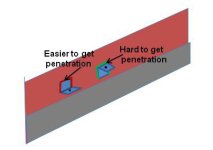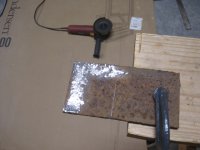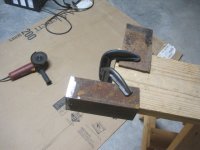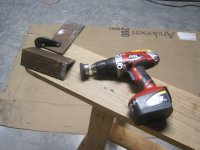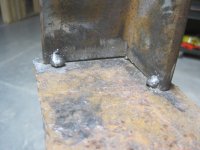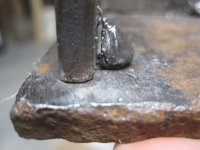clemsonfor
Super Member
I would just use any kind of oil i had before i spent that kind of money for a one off hole.
I found this piece of 1/4" angle iron at the scrap yard when I went back to find some heavier metal on which to practice my welding. It's about the size of a brick lentel. However, I keep picking up practice scraps and then thinking of some real use for them which makes it difficult to then use them for practice welding. It's funny now that when driving around, I keep my eyes on the watch for junk metal sitting around. A month ago, junk metal was just junk. Now it's something I covet.
View attachment 313138
I think I'll cut a piece off of it and use it to make Jinman's suggested ball mount for my box blade. I may not even add the side support pieces shown on Jim's drawing. I suspect this angle iron may support 500 lbs tongue weight by itself.

I found this piece of 1/4" angle iron at the scrap yard when I went back to find some heavier metal on which to practice my welding. It's about the size of a brick lentel. However, I keep picking up practice scraps and then thinking of some real use for them which makes it difficult to then use them for practice welding. It's funny now that when driving around, I keep my eyes on the watch for junk metal sitting around. A month ago, junk metal was just junk. Now it's something I covet.
I think I'll cut a piece off of it and use it to make Jinman's suggested ball mount for my box blade. I may not even add the side support pieces shown on Jim's drawing. I suspect this angle iron may support 500 lbs tongue weight by itself.
Jim,How will you orient the piece? Will you cut it and put one flat side against the boxblade and weld around the perimeter? Will you turn the lip up or down? My choice would be to turn the lip down so I did not have to weld where the angle iron is thickest at the corner. I'd turn the lip down and weld around the three sides of the flat against the boxblade. If it ever bends down, you could weld a couple of gussets under it for added support. I agree, that angle is likely to never bend with the loads you are describing.
Jim,
I was thinking I would orient the ball mount the same as in your picture but without using the side support pieces. I just figured I would weld around all 4 sides of the ball mount. Why would you avoid welding the side along the angle iron corner that is thickest?
Obed
Jim,
I was thinking I would orient the ball mount the same as in your picture but without using the side support pieces. I just figured I would weld around all 4 sides of the ball mount. Why would you avoid welding the side along the angle iron corner that is thickest?
Obed
Cause your welder wont likely get hot enough to penetrate well enough on that thick end, but it you turn it like yall are talking that end is thinner allowing that metal to totally be penetrated by the weld metal.
